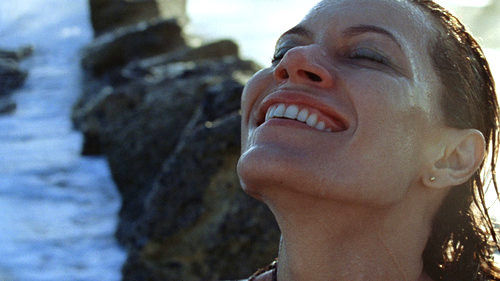
Despite its fairy tale title, Brazilian writer/director Marcelo Gomes’ Once Upon a Time, Veronica is a realistic look at contemporary urban South America. What’s engrossing about this film is that it takes viewers behind the scenes into the psyche and soul of its protagonist, Veronica da Silva Fernandes (Hermila Guedes). By going beyond the celluloid stereotypes of countless Carmen Miranda movies, 1959’s mythic Black Orpheus, etc., and revealing Veronica’s inner life, we have a fully fleshed out picture of a 21st-century woman living in Recife, on Brazil’s northeastern coast.
Much of the truthfully drawn film is concerned with Veronica’s private life. Its nudity and sex acts are fairly graphic by Yankee standards, where couples often make love beneath blankets. But our heroine is far more than a beach blanket bimbo or just another “hot Latin lover.” In fact, Veronica is a doctor (if I understood correctly, a psychiatrist). Much of the film details her work inside a city hospital and the related stresses of trying to treat, and perhaps heal, psychologically suffering patients, some of whom abuse her.
In the classic “physician, heal thyself” mode, Veronica too experiences existential angst and ponders the meaning of life, often empathic with her clientele. In this sense, Once is reminiscent of European Sixties cinema by Michelangelo Antonioni and Ingmar Bergman, with those estranged characters seeking purpose and connection. As Southern Hemisphere countries undergo development, part of the process seems to incur these psychological crises that once seemed reserved for denizens of the materialistic, consumer societies in the developed world.
Veronica finds release from her daily grind in carefree sex and water. Whether romping in the surf (alone or with friends or as part of an orgy) or in her shower, water is a recurring motif that provides our heroine with a form of hydrotherapy. Perhaps it can be argued that the sea in particular is what connects Veronica most to her Brazilian-ness.
As for her sexuality, Veronica confides that her problem isn’t having sex or finding partners, but rather discovering true love. So there’s a conflict as to whether Gustavo (João Miguel) will remain solely a sex partner, her boy toy – or, on a more intimate level, become Veronica’s “official boyfriend.”
Perhaps this is because Veronica still lives with her ailing, aging father, Zé Maria (W. J. Solha) – who loves frevo music and has a book by Lenin on his shelf – with whom she has a warm, nurturing relationship. Maybe she’s channeling those loving feelings into her father, instead of a romantic partner (paging Dr. Freud!).
Guedes’ performance always rings true. Her Veronica is not a classic beauty; rather, her attractiveness is derived from the character’s realistic earthiness. We experience a natural instead of artificial woman, which makes her all the more sexy and endearing. She embodies an insouciant state of grace that is the essence of joie de vivre. Apparently around 35 years old, Veronica is physically and mentally poised somewhere between youth and the onset of early middle age. Indeed, the film begins with Veronica sitting at her medical exams, as she transitions from student to entering the workplace as a professional.
Gomes combines neo-realist and more arty cinematic styles, with lots of close-ups. We get a real slice of life as lived by real residents of 21st-century Recife. But a shot that lingers on Veronica’s grief-stricken visage goes on far too long, and one almost wants to shout “Cut!” at the screen at this affectation. The Brazilian auteur’s other films include the noted 2005 Movies, Aspirin and Vultures.
Overall, Once Upon a Time, Veronica is a candid, absorbing film that sheds light on contemporary Brazil through the life of a vibrant, bright woman full of longing and striving for hope. It opens in Los Angeles on November 28 and then screens nationwide.
Photo: Courtesy Big World Pictures

MOST POPULAR TODAY


Zionist organizations leading campaign to stop ceasefire resolutions in D.C. area

High Court essentially bans demonstrations, freedom of assembly in Deep South

Afghanistan’s socialist years: The promising future killed off by U.S. imperialism

Communist Karol Cariola elected president of Chile’s legislature






Comments